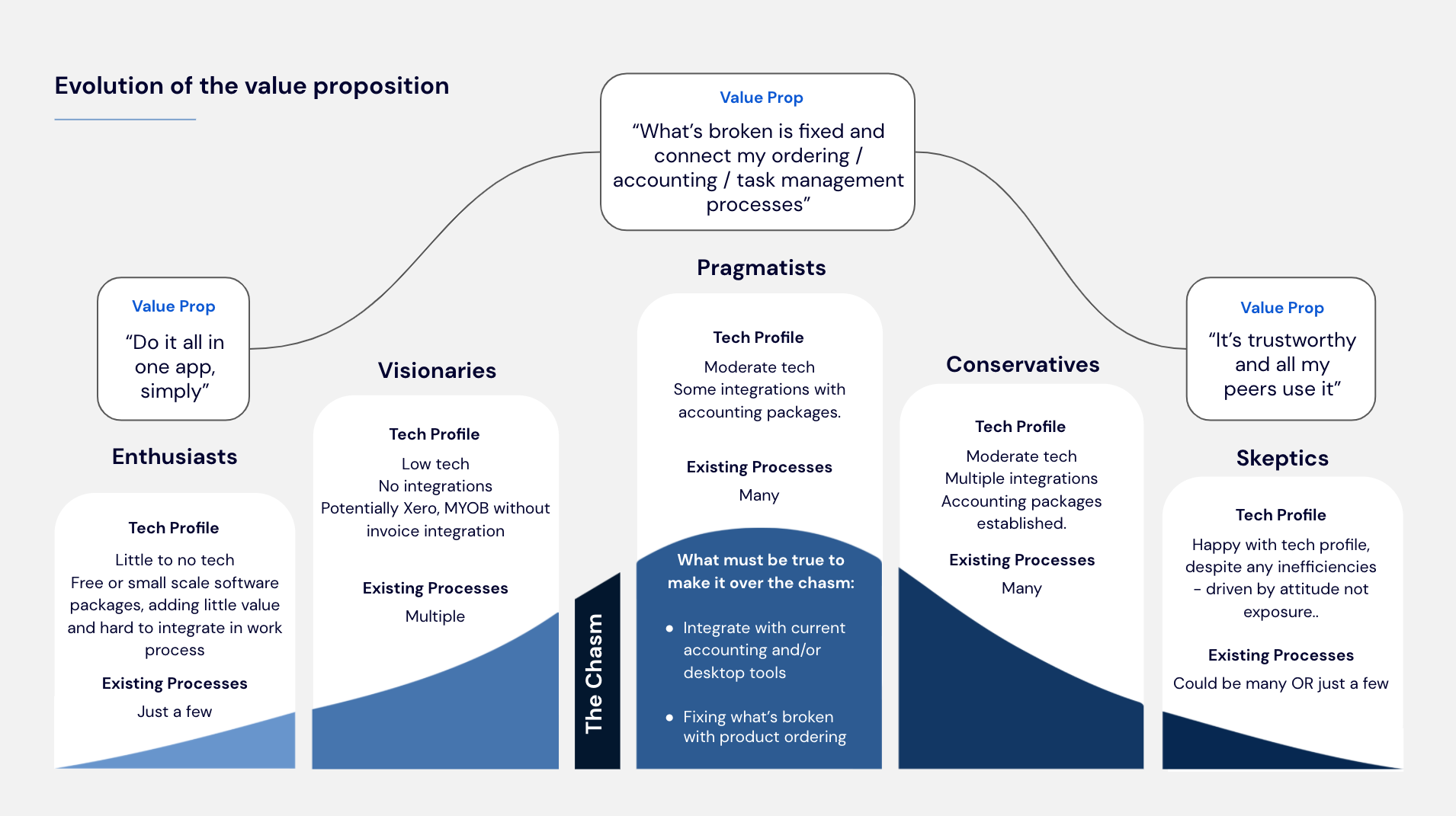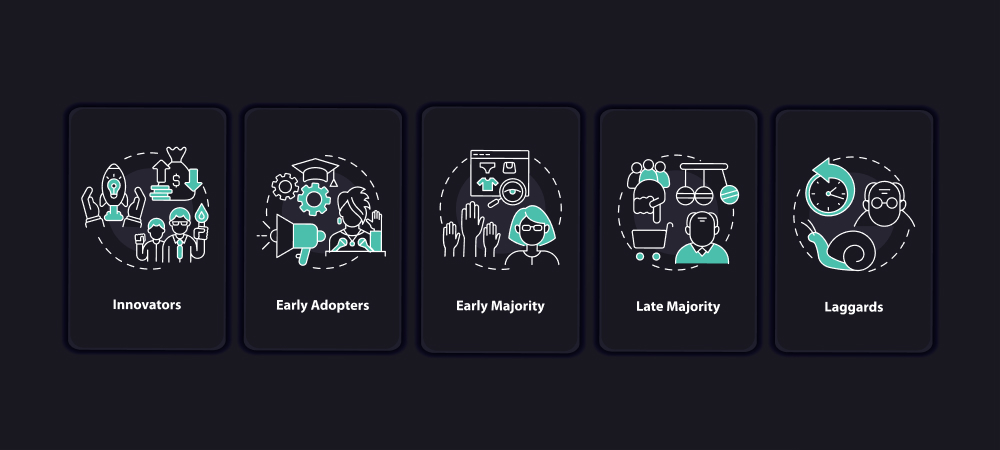When thinking about building great products to hit critical mass, the product adoption curve is a popular conceptual tool. However, just because we read left to right, doesn’t mean we should design our product adoption that way.
The assumption can be that innovators and early adopters are an easy win, as they are often risk takers with an appetite for change provided the value is right. It’s tempting to believe once these imaginary people are talking about using our fantastic product everyone else will naturally follow suit.
When we see the chasm on this diagram, it’s easy to believe the “chasm to mainstream adoption” is simply that our product is too revolutionary, too new for the market right now, but time will solve that. Or that we can solve for the chasm after we have solved for our early adopters, because at least we have something in the market to learn from. Or that the chasm does not exist.
Designing for innovators and more generally for your fans is exciting, but it’s also a barrier to further adoption because you’re not encouraged to look for barriers to adoption outside of those groups.
What innovators love about your product won’t always be what those in the majority love about it.

Customer discovery processes should start to clarify how different user groups feel about your customer value proposition (CVP) today and how they’re solving this problem today.
If your CVP is a pain reliever your goal should be to understand exactly how your customers are solving these problems today and how they perceive these problems as interfering with their overall goal. If your CVP is a gain creator; it helps to understand if they are getting this from a competitor or someone else in the market today and how much additional value it will add to their current life. Walking through their processes from end to end will help you understand how they take care of business (so to speak!) and get the job done.
Understanding barriers to adoption for the majority may uncover opportunities that you may not have seen if you were purely designing for innovators.
By understanding the chasm to adoption and thinking about the solutions our customers already have in place, we can get creative about our design solutions.
We recently ran a discovery with a B2B client on a product proposal, that aimed to simplify their customer’s financial processes when ordering supplies. The proposed solution had significant opportunity, however, when we started research with customers and understood their barriers to adoption, we quickly realised that the proposed CVP didn’t translate across the product adoption curve.

While the solution we were originally envisioning of a simple “all in one” order to invoice app would have been fantastic for the Enthusiast/Innovator category, the same solution was not attractive when presented to the majority of users. It simply didn’t solve the real problems that were the root cause of the administration drain on their day to day processes.
By understanding the customers’ patterns and needs, we were able to identify a solution that achieved the intended product vision; for their customers to spend less time on administrative tasks and focus on their core business.
Without this discovery step, the solution they had imagined would have likely been targeted for a very small subset of their audience with a value proposition that would never have been attractive to the majority of users. Had they commenced building this product with their team, it likely would have resulted in a large engineering effort for a minimal uptake.
There is no predictive algorithm for perfecting product adoption, but discovery is one of the best tools we have. By learning from customers early in the process, we can continue to adapt and mould our customer value proposition, before a single line of code is even written, to ensure that what we bring to market is valuable to as much of our target audience as possible.
Written by Amanda Brown, Dec 12, 2022
